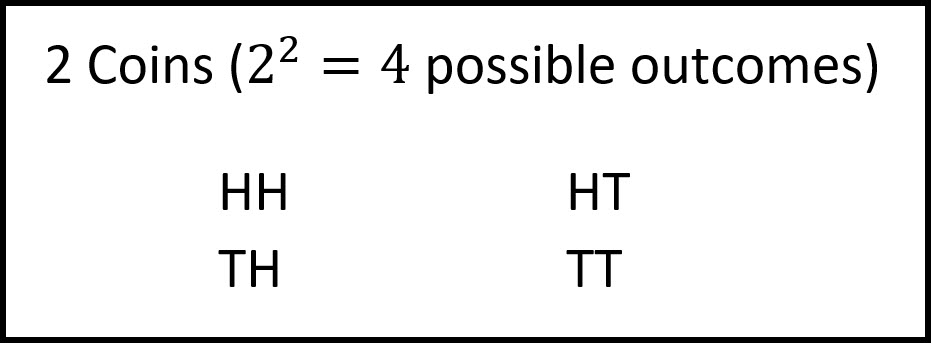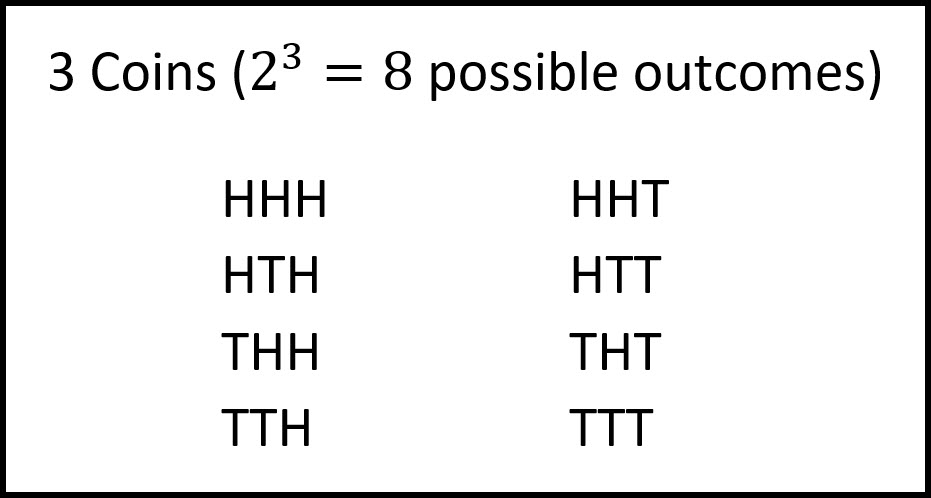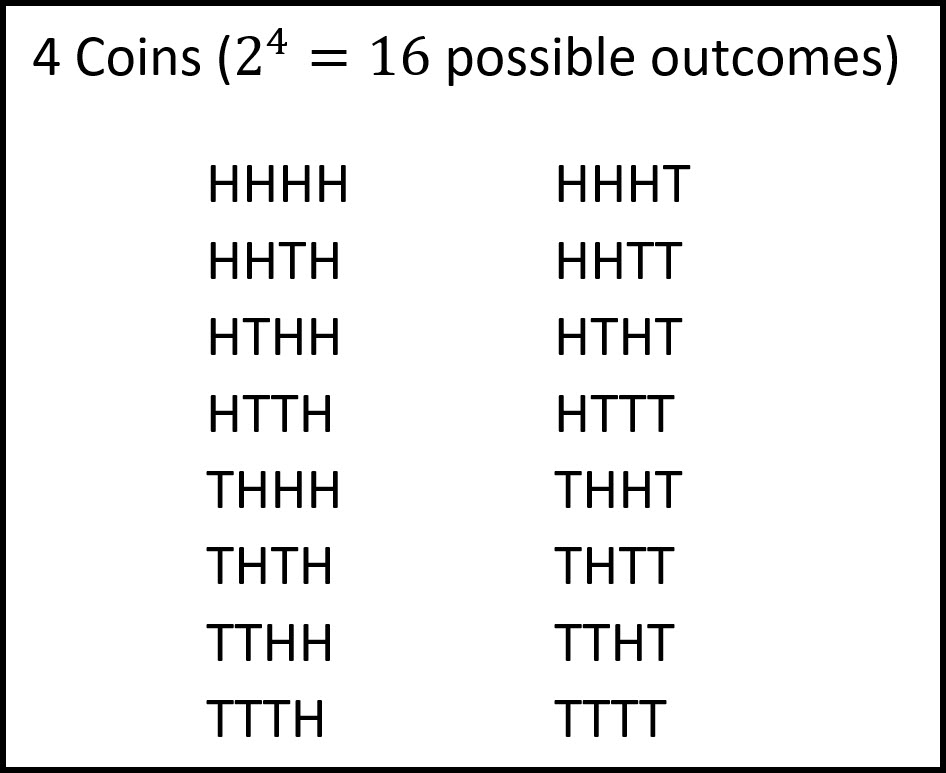Andymath.com features free videos, notes, and practice problems with answers! Printable pages make math easy. Are you ready to be a mathmagician?
Notes




Problems
You flip a coin 1 time. Find the following probabilities.
\(\textbf{1)}\) \( P\)(heads)
\(\textbf{2)}\) \( P\)(tails)
You flip a coin 2 times. Find the following probabilities.
\(\textbf{3)}\) \( P\)( 1 heads)
\(\textbf{4)}\) \( P\)(2 heads)

\(\textbf{5)}\) \( P\)(No heads)
\(\textbf{6)}\) \( P\)(2 tails)
You flip a coin 3 times. Find the following probabilities.
\(\textbf{7)}\) \( P\)(2 heads)
\(\textbf{8)}\) \( P\)(1 tails)
\(\textbf{9)}\) \( P\)(3 tails)
\(\textbf{10)}\) \( P\)(no tails)
\(\textbf{11)}\) \( P\)(no heads)
You flip a coin 4 times. Find the following probabilities.
\(\textbf{12)}\) \( P\)(3 heads)
\(\textbf{13)}\) \( P\)(4 tails)
\(\textbf{14)}\) \( P\)(at least 3 heads)
\(\textbf{15)}\) \( P\)(at most 2 tails)
\(\textbf{16)}\) \( P\)(no tails)
\(\textbf{17)}\) \( P\)(more than 3 tails)
\(\textbf{18)}\) \( P\)(at least 1 head)
See Related Pages\(\)
\(\bullet\text{ Statistics Homepage}\)
\(\,\,\,\,\,\,\,\,\text{All the Best Topics…}\)
\(\bullet\text{ Probability with Coin Tosses}\)
\(\,\,\,\,\,\,\,\,\text{Prob(3 heads)}=\frac{1}{8}\)
\(\bullet\text{ Probability with Marbles }\)
\(\,\,\,\,\,\,\,\,\text{Prob(3 red)}=\frac{7}{20}…\)
\(\bullet\text{ Probability with Dice}\)
\(\,\,\,\,\,\,\,\,\text{Prob(Two 6’s)}=\frac{1}{36}…\)
\(\bullet\text{ Probability with Round Tables}\)
\(\,\,\,\,\,\,\,\,(n-1)!…\)
\(\bullet\text{ Probability with Poker Hands}\)
\(\,\,\,\,\,\,\,\,\text{P(Full House)}=…\)
\(\bullet\text{ Andymath Homepage}\)
In Summary
Probability is a measure of how likely an event is to occur. The probability of a coin toss resulting in heads or tails is always \(1/2\), or \(0.5\). This is because there are only two possible outcomes for a coin toss (heads or tails) and each outcome is equally likely to occur.
For example, if you toss a coin \(10\) times, you might expect to get \(5\) heads and \(5\) tails, but it is also possible to get \(6\) heads and \(4\) tails, or any other combination of heads and tails. The probability of getting any specific combination of heads and tails in 10 tosses is \(\left(1/2\right)^{10}\), or \(1/1024\), since there are \(2^{10} \, (1024)\) possible combinations of heads and tails for \(10\) coin tosses.
Probability can be a useful tool for analyzing situations involving coin tosses or other random processes. By calculating the probabilities of different outcomes, you can make predictions and decisions based on the likelihood of certain events occurring.
About Andymath.com
Andymath.com is a free math website with the mission of helping students, teachers and tutors find helpful notes, useful sample problems with answers including step by step solutions, and other related materials to supplement classroom learning. If you have any requests for additional content, please contact Andy at tutoring@andymath.com. He will promptly add the content.
Topics cover Elementary Math, Middle School, Algebra, Geometry, Algebra 2/Pre-calculus/Trig, Calculus and Probability/Statistics. In the future, I hope to add Physics and Linear Algebra content.
Visit me on Youtube, Tiktok, Instagram and Facebook. Andymath content has a unique approach to presenting mathematics. The clear explanations, strong visuals mixed with dry humor regularly get millions of views. We are open to collaborations of all types, please contact Andy at tutoring@andymath.com for all enquiries. To offer financial support, visit my Patreon page. Let’s help students understand the math way of thinking!
Thank you for visiting. How exciting!
